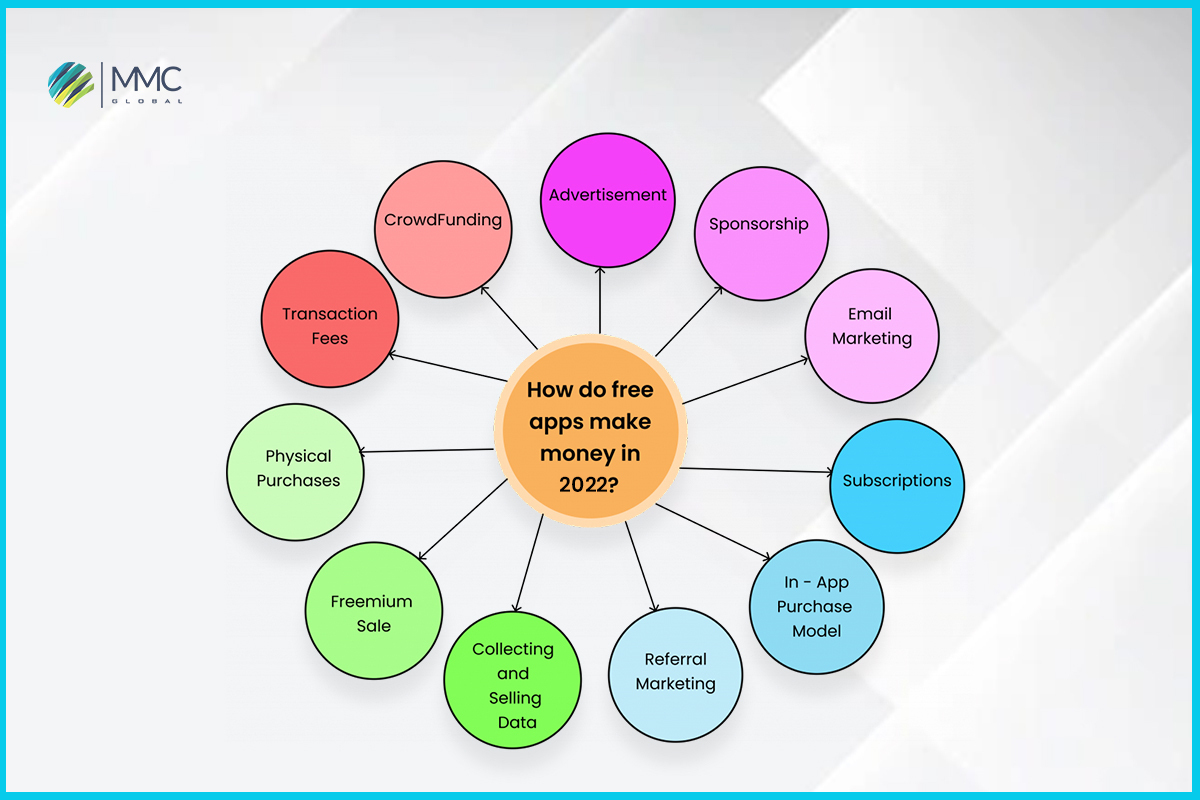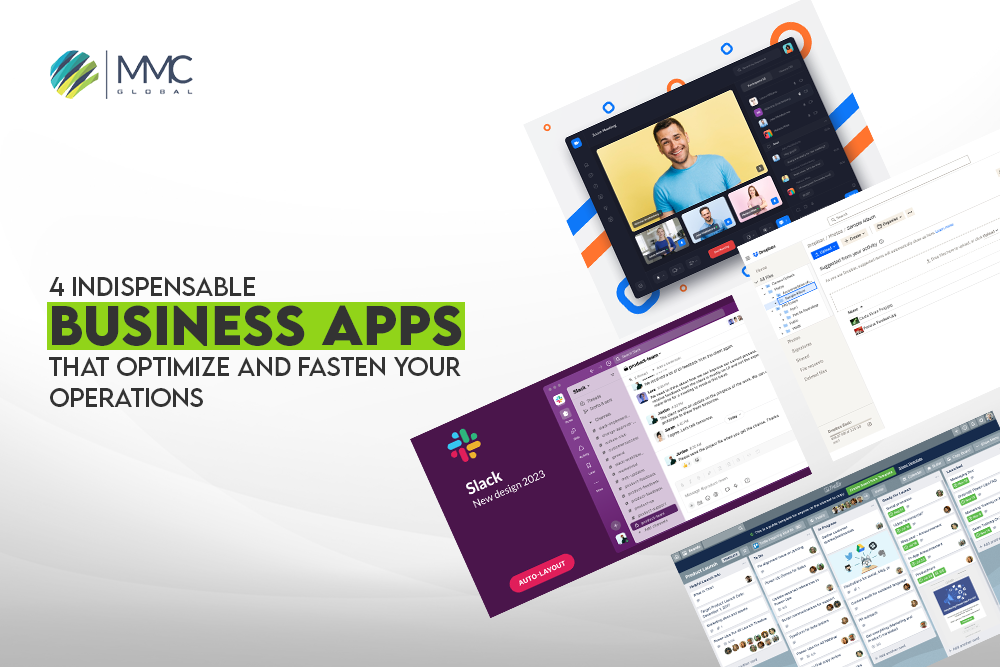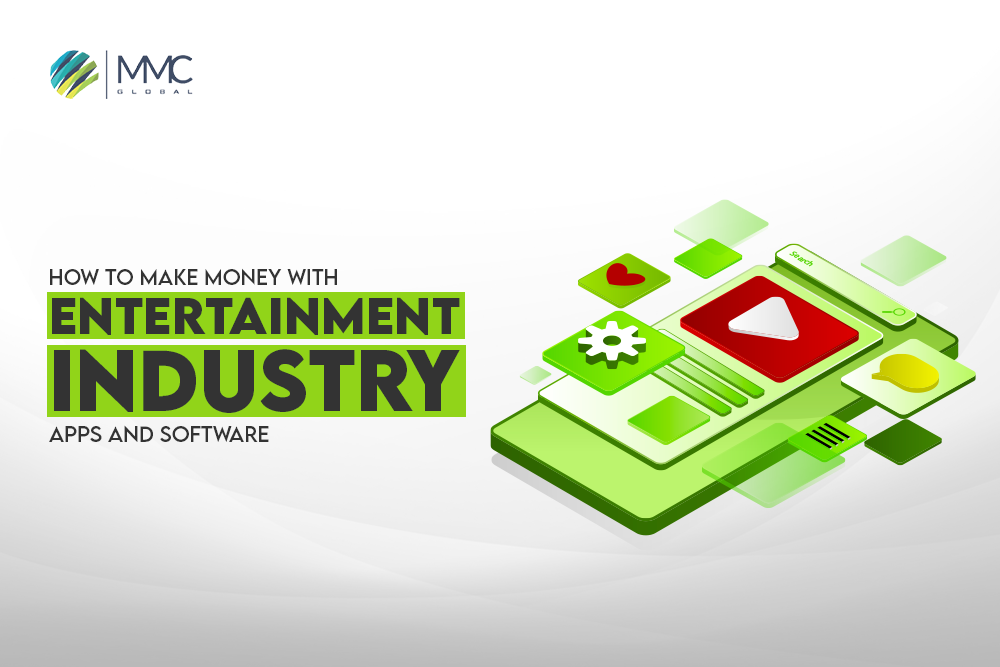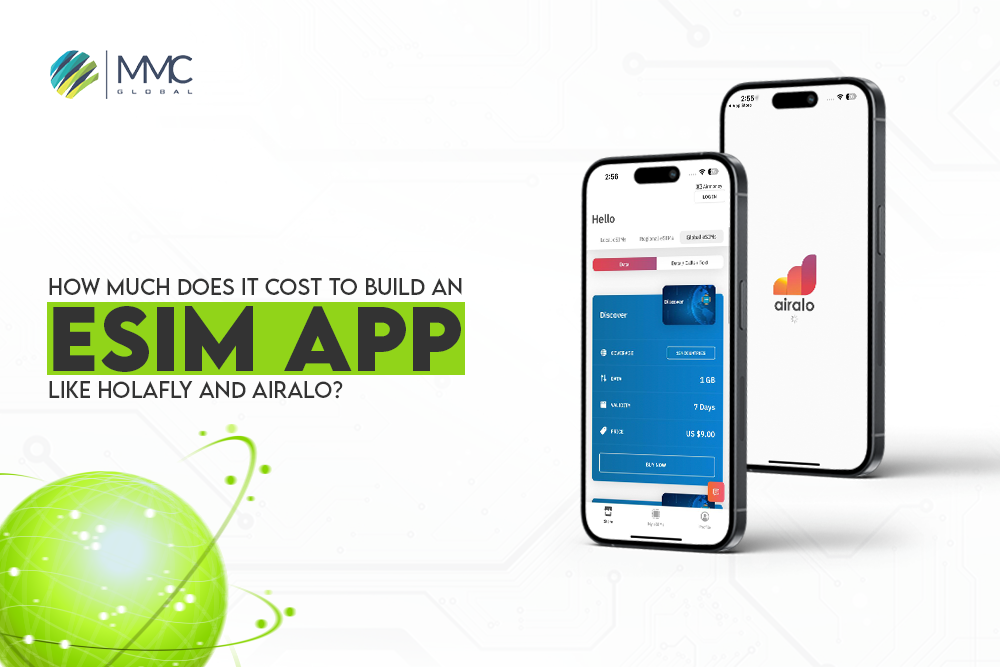Free Apps in 2022 – 11 Proven Strategies to Make Money
In 2022, how will free applications earn money? What is the best way to monetize an app? Have you ever considered how to generate money with free apps? This article is for businesses who want to understand how to design and monetize an app. As well as how to make money with apps by releasing free apps.
The free app market has always outstripped the premium app industry (in terms of profitability and downloads). That is why most people wonder how much money apps earn.
Before we get into how free applications earn money, it’s important to understand that, according to Techcrunch, the app boom hasn’t finished (and won’t).
Even though the share of paid app income has dropped from 75.9% to 37.8%. The mobile app business is still worth billions of dollars.
Experts also expect that worldwide app income will treble between 2016 and 2020!
So, if you assume that you can’t generate money with free mobile applications because they’re not as good as premium apps, you’re completely mistaken. According to Google Play, free apps generate 98 percent of all income worldwide. As a result, you should think about how to generate money by designing applications more.
According to Techcrunch, more than 90% of apps on the market are now free. In addition, income from apps that pay for download (paid apps) is likely to decline in the future years.
We’ve collaborated with a lot of entrepreneurs and assisted them to turn their concepts into the top money-making apps.
In reality, our clients value our experience developing picture and video apps. As a result, we’ve not only been able to create applications that earn you money and produce a significant amount of cash for our clients. We’ve also been listed in the top images and videos apps category.
Options for App Monetization
These were the most prevalent app monetization tactics employed by leading app producers, according to Statista.
Another set of recent statistics compiled by our app consultants demonstrates that free applications have a win-win potential. According to Statista, the distribution of free and premium applications in the Apple App Store and Google Play Store as of December 2019 is as follows.
Free versions of apps are not always better than paid ones. There can be major differences in features between the two. You might end up paying for an upgrade later on down the line!
A lot goes into making your favorite smartphone toolkit app—both before release as well after launch day such as updating content or adding new tools over time that we enjoy using every single day (or night). So why would someone choose a free option when they could Pay Up? Well…the truth is some developers will offer “lite” editions that contain fewer functions than their premium counterparts. But still, provide enough basic functionality to start with experimenting without having to commit immediately.
What's the Difference Between Free Apps and Paid Apps?
Free Apps
These apps attract a larger number of targeted users, as well as increased exposure and downloads.
These applications are a wonderful approach to enhance your software in the app store by obtaining positive reviews.
They are less expensive than the paid ones since they are not as complicated. In the future, there will be other monetization options.
They aid in the development of a brand’s image and reputation in the internet world.
Paid Apps
Because the premium software has fewer downloads, you will lose prospective customers who are unwilling to pay.
Higher user expectations- you’ll need to make sure your software runs well and has a comprehensive set of features.
Paid app development and design costs are relatively high.
Monthly and annual payments are the only monetization choices.
Even if an app has a lot of positive ratings, users are less inclined to buy it if they can’t test it out first.
So, as you can see, there are a lot of various methods to generate money by designing an app, but what are the best possibilities here? How do these people generate money from free applications?
In summary, you may employ this free app monetization technique from a list of 11 options: ads, subscription fees, offering merchandise, in-app purchases, sponsorship, reference marketing, data collection and sale, freemium upsell, real purchases, processing fees, and crowdsourcing. Let’s look at the top and most common revenue strategies for how to make money on free applications if you’re curious about how apps generate money or want to learn how to make money from apps.
How Do Free Apps Make Money: The 11 Most Popular Revenue Models

1. Advertising Free Apps
When it comes to making money with free apps, advertising is perhaps the most frequent and easiest to install. It can also be done through a third-party ad network.
Here are the statistics on mobile advertising spending in 2019 and what to expect in 2020, according to Statista’s newest analysis and study.
190 billion dollars in the year 2019.
In 2020, we can expect a total of 280 billion dollars.
Whenever someone asks, “How can I generate money from free mobile apps?” Your initial idea might be to monetize applications with adverts, and there’s nothing wrong with that. An app owner only has to include advertisements in their free app or use affiliate marketing to earn money from third-party ad networks. Furthermore, advertising is the best way to make money from applications. As an app owner, all you have to do is display your advertising within the mobile app. And you’ll be able to get paid quickly from third-party networks and commercials.
The free app owner is usually compensated when the user clicks or hits the advertisement. Also, it may be when the user installs the application via advertisement.
You can earn money every time an ad is shown (per impact), every time a user clicks on the ad, and every time a user downloads the sponsored software. Because this is a free edition, you can also run ads to make cash for a limited time.
App vendors often use four different types of display adverts to monetize their apps. However, as the app owner, you must keep track of whether the targeted users find the advertising interesting or whether they are adblocking them.
Interstitial ads
Full-screen pop-ups that appear at certain times are an example of this form of app marketing. You can stop the ad by using the close button in the top left or right corner.
When a user finishes altering a photo and saves it to the gallery, for example, an advertisement may appear. Gaana, a wonderful example of app monetization, employs this strategy. This app was able to improve its app experience by using such an ad technique without having to pay any advertising expenses.
Banner ads
In-app video ads
These advertisements are shown automatically and are typically utilized as a reward video in return for in-app benefits. For example, app users can obtain app money by viewing an advertisement video. It can be used to unlock levels in the game or purchase more features. This is the most often used advertising-income strategy among users.
Native ads
Native advertisements integrate into the app seem like a natural part, commonly use to advertise products or a mobile app. In this scenario, free affiliate marketing will assist in increasing user engagement for your software.
Because people are less angry and invasive with such adverts, this strategy is becoming increasingly popular.
However, one thing to keep in mind concerning native advertisements is that, in comparison to other ways, their earnings might be rather low. Native advertisements are the most disliked by consumers, even though mobile app developers consider them to be the greatest technique.
Reward videos
When it comes to in-app ad integration, this is the most effective advertising approach. Online users watch in return for points, life, or virtual items. It is simple to generate money with this ad strategy, and as an advertiser, you can successfully deliver brand messaging.
The main benefit of adopting this ad campaign is that it has a high retention rate since consumers get rewards for watching these advertisements. It works best for top-grossing applications and the gaming apps industry because gamers enjoy getting free stuff. The effective cost per mille for this sort of advertising is greater than for any other.
Now, as the great philosopher once stated, everything has two sides, good and evil, so let’s take a look at the gist of this app monetization method.
2. Subscription for cost free Apps
Consider how an app generates revenue. The best and most effective app monetization technique is to adopt a subscription model. App producers can opt to provide free content in their applications for a short period before charging customers a membership price that allows them to access the entire app without limits.
The majority of free app publishers employ a popular and common strategy of providing a free trial period before charging a subscription price to people who desire to continue accessing the app’s content.
Cloud services, video, and audio streaming, and online news services are all examples of this method.
Apple is paying special attention to and making major improvements to how app subscription models function to make the integration of this revenue source easier. Apple’s existing revenue split of 70/30 will be maintained for the first year of subscription in the current model. After one year, the new income split of 85/15 will be introduced automatically.
This new structure had created to encourage app publishers to charge a recurring subscription rather than a one-time price for their apps. Considering this, according to Sweet Pricing, just 5% of the most successful applications use a subscription income model or build subscription-based mobile apps.
3. Selling Merchandise with no charges
Another fresh idea is to offer products through your free mobile applications.
To sell tangible things such as toys, clothing, and shoes, many e-commerce enterprises provide free versions. These tangible items can sell through the app or email marketing.
Amazon has launched a service called Merch by Amazon to enable app developers to employ this method. Merch by Amazon enables publishers to develop artwork, submit it to their platform, and advertise their items. It’s a win-win situation for both app owners and users. Amazon even handles the purchase and delivery of products to make things easier.
Take a look at these benefits and drawbacks to help you decide whether or not to use this monetization approach to get your free app concept off the ground.
4. In-app purchases for free
The in-app purchase model allows users to make purchases straight from within free mobile applications, and it’s typically an easy procedure. They’re usually utilized to get access to special material or features like power-ups, restricted levels, or extra functionality.
In-app purchases can access the app’s more sophisticated and advanced features. It allows for much faster and more empowered user engagement.
To put it another way, the in-app purchasing model allows users to sell a range of virtual goods straight from the game. In-app purchases have improved the user experience of the finest free gaming applications.
According to Forbes, publishers make the most money from applications featuring in-app purchases. This monetization approach predicts to continue to dominate in the coming years.
This strategy is commonly employed by game publishers, owing to the availability of digital currency. Half of the games offer several game currencies, including gems, coins, and gold. In-app purchases are a big part of why people download apps.
Overall, this is an intriguing concept for converting non-paying app users to paying app users without being overbearing. However, you must keep people engaged in your free mobile apps for them to continue paying.
“Among ad agencies and companies, there are a lot of brands, roughly 77 percent, who have urged their agencies to invest in in-app purchasing inventory,” according to a poll by tech firm Fyber.
The major chunk of advertising budgets in the UK are now spent on mobile, according to agencies and advertisers. In-app advertisements are more trustworthy than mobile browser ads, which is why they are worth investing in. In-app transactions also need to increase engagement.
“The forms of playable ad formats, rewarded videos, and opt-in are viewed as the most effective in-app purchasing approach,” according to the Business of Apps study.
5. Sponsorship
Sponsorship is a less popular way of revenue, but it may still be an intriguing idea.
In other words, if the app publisher creates the perfect specialized app for a specific demographic and launches it on behalf of another brand, sponsorship in mobile applications may be a lucrative app monetization technique.
App publishers, like website publishers, must think about sponsors whose target demographic is the same as the apps. Making a list of organizations and businesses that potentially benefit from the collaboration is a smart place to start before designing the app.
The Home Depot sponsorship on the Weather Channel App is a wonderful illustration of how you can generate money from applications through sponsorship partnerships. The animated app backdrop behind the temperature measurement refers to a sponsored commercial aimed at homeowners who are interested in weatherproofing their homes.
6. Costless Referral Marketing
Referral marketing is the practice of advertising a third-party product or service to increase income.
Based on the number of clicks or installations, app publishers can advertise or sell affiliates’ items or services. Pop-up advertising can promote someone else’s app or market items in this way.
Publishers utilize a variety of referral marketing techniques to help them grow their businesses.
Cost per acquisition or cost per action (CPA)
You may choose from a variety of affiliate networks to locate one that is right for your free mobile app. This strategy allows you to generate money by promoting other applications, advertising things via pop-ups, or promoting apps through an in-app shop.
Cost per click (CPC)
The amount of clicks on a shown ad is the basis for this revenue model. For this strategy, you may join prominent networks like Adfonic or Google’s AdMob. Both text and display adverts are available, allowing you to monetize your app.
Cost per view (CPV)
Charges are depending on the number of ad engagements or video views under this arrangement. BrightHouse, a mobile game development business, was able to improve the revenue of their app by 130 percent by using cost-per-view networks.
In their smartphone game, they employed video and interstitial adverts to create natural gaps between gaming sessions.
Cost per install (CPI)
Cost per install (CPI) is a relatively recent marketing strategy that is similar to CPA (cost per acquisition) in the online marketing arena.
You are compensated for each distribution of the promoted app in your free app with cost per installation.
There are a variety of platforms that offer software to integrate into your app. Chartboost and Playhaven are the greatest examples of this approach. Both are third-party networks that require you to install software inside your app.
This network’s cost ranges from $0.80 to $3.00, and online affiliate networks provide a variety of campaigns for generating worldwide traffic while advertising other programs, making it a lucrative industry to participate in.
Start by looking at these benefits and draw your conclusions about whether or not to use this monetization approach.
7. Collecting and Selling Data for free
Apps, as you may know, acquire a lot of data on their users, whether it’s user behavior or other app usages. Many academics in many domains are interested in all of these user behavioral data.
This means that free app producers may profit handsomely by selling their users’ behavior data to these researchers. Users’ email addresses, social media profiles, and individual preferences are typically found in the data.
This model can be beneficial in two ways. You may either track what users do and sell the information to various organizations and academics, or you can utilize the raw data yourself.
Businesses want to spend on presenting adverts to the most relevant audience from a marketing standpoint. So, if you can acquire enough relevant data, you might be able to benefit from it. If you have a query regarding how to earn money developing Android apps, consult a leading mobile app development company MMC GBL. You can get more information on monetization strategies. A similar method is for iOS apps. MMC GBL helps companies to build iOS and Android apps with maximum functionalities and optimum features. Their professional developers have good command and a proven data migration process for any operating system.
8. Freemium Upsell
When it relates to freemium upsell, freemium applications are those that are available to download for free but include paid or premium features. In-app payments are required to unlock these paid and premium features.
Users may download this sort of freemium program without paying anything, and if they enjoy the content, they can upgrade to acquire full capability by making a payment. Because premium services are optional, this strategy can quickly attract a large number of new consumers.
Customers can download apps for free but must pay for additional or premium services, according to a mobile application development company. Such features and other android app development services may be accessed through in-app purchases, which have been incorporated.
Additionally, bespoke iOS and Android app creation services provide a range of options for generating free apps, which company owners are making use of to generate revenue and attract clients.
Furthermore, this method is often used in education, health, and sports applications, allowing users to obtain premium features for a fee.
9. Physical Purchases
Many eCommerce firms and startups have begun to market their products or real things like mobile cases, t-shirts, toys, and other items via built apps on the app store. Take, for example, Angry Birds, a free app that raised the earnings from branded items.
Every month, the Rovio firm sells nearly 1 million branded t-shirts, backpacks, and stickers through its free gaming software. In reality, Amazon has created a Merch self-service platform to sell custom branded t-shirts through their applications, allowing them to generate income from products.
Before we wrap up this business model, let’s take a look at the benefits and drawbacks of this monetization technique, which will help you see things more clearly when considering how to earn money from free apps without adverts.
10. Transaction Fees
Transaction fees are the most effective approach to monetize your apps. It’s the most effective technique to monetize your apps in the app store. It’s particularly achievable with applications that operate as a platform for digital transactions daily.
Let’s have a look at an example. You can charge transaction fees if your mobile app allows third parties to sell their items and those purchases can be completed online. You may generate a lot of money by charging a tiny fee for each transaction that occurs on your app. In this manner, you may generate money from your mobile apps without having to spend a lot of money.
We’ve compiled a list of the benefits and drawbacks of transaction fees so you can see where the flaws are.
11. Crowdfunding
Crowdfunding, which is relatively new in the market, is another option to generate money from free applications. In this strategy, entrepreneurs and businesses post their ideas on crowdfunding sites like Kickstarter, Patreon, Crowd Supply, Fundable, Indiegogo, and Chuffed in the hopes of raising funds to support the development and advertising of their software.
Non-gaming mobile apps are frequently preferred in crowdfunding, according to Mobile Growth Stack data. There were around 138 non-gaming applications that had raised funds between $10,000 and $100,000 as of May 2017, compared to 29 mobile games with a comparable funding target.
3 Tips for Choosing the Best App Monetization Methods
Keep the type of app in the center
You must first choose the nature of your app before choosing any of the monetization options. What is the problem that your software addresses, and how does it solve it?
You’ll be able to choose the best monetization technique for your app in the app store once you know what it’s for. Subscription models for content and service apps, for example. Single-purpose applications, game apps, and commerce apps are unlikely to benefit from it.
Competitor analysis
The competitive examination does not restrict to an app’s features, functionality, and design. You can simply determine the monetization business plan for your app by conducting a thorough analysis of your similar rivals. Consider the following questions: How do your rivals make money? What is the strength of their monetization models? Is there any loophole that you might use to your advantage?
Know your target audience
You must first research your target demographic to gain online cash through app monetization tactics. What are their names? The maximum amount they are ready to pay for? What exactly do they require? To summarize, people should be aware of the true worth before making transactions.
After going through all of these ways to earn money with free applications, you’re almost ready to turn your concept into an app. Our app developers have created an easy app cost calculator to help you get a general estimate of how much your app development will cost.T
Ending Notes
With so many app monetization models to choose from, it’s vital to remember that each strategy has its own set of advantages and disadvantages to consider when monetizing an app. However, putting these strategies to the test and studying what your rivals are doing is an excellent place to start. Now you may know how much money you can earn from an app, how to make money with a fresh app concept, and how to make money off a free app, or you may have discovered new ways to generate money from free apps.
So, before deciding on a monetization plan, you should evaluate the app structure and target audience while working with a reputable mobile app development company. So that you can properly think about how to generate money-making apps.



